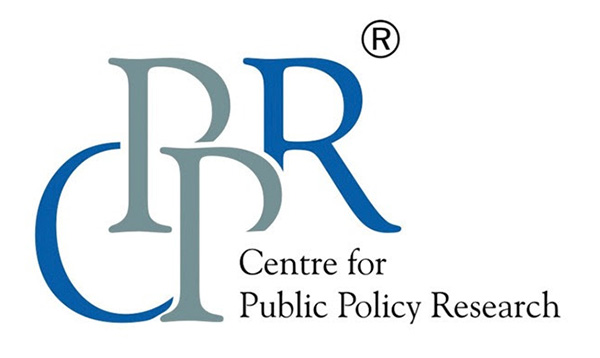Articles

Union Budget 2025 focuses on Urban Ecosystems, Boosting Economic Activities
February 4, 2025
D Dhanuraj of CPPR Comments in TNIE on the positive Union Budget 2025 proposals for India’s Shipbuilding Industry
February 7, 2025Welfare, Debt and Migration: Can Kerala’s Economy Keep Up?

Kerala’s public finance management has been under stress for quite some time. In the recently published fiscal management index by Niti Ayog, Kerala is ranked 15 out of 18 states, which shows the depth of the challenges the State faces. Among the sub-indices, Kerala performed the poorest under the head “Quality of Expenditure”, at the all-India level.
In the last two decades, Kerala’s total revenue expenditure has grown nearly eight-fold from approximately INR 20,000 crore in 2000-01 to around INR 1,60,000 crore in 2023-24. This increase reflects not only the expanding role of the state in ‘welfare’, but also an unsettling trend of non-development expenditures shooting up. The non-development expenditure constituting administrative costs, pensions, and interest payments, has surged, particularly from 2018-19 onwards.

This trend underscores the challenges Kerala faces in balancing its fiscal priorities while addressing the growing needs of its population. In the last decade, there has been a lot of talk on how to reduce the debt of the state and at the same time, how to earmark more money for the capital expenditure to meet the challenges arising from the urbanised Kerala. One major challenge in this discourse has been the lack of agreement and understanding of the needs of an urbanised state, both administratively and politically.
With the increased remittance from the 1990s, Kerala’s has undergone a rapid generational shift especially in this century. While the state attained high development indicators as early as the 90s, largely due to the increased support from the state in education and health sectors, the returns from this progress were drained abroad due to people’s migration. This is to say that the State’s development model could not adequately create economic opportunities regionally and retain talents. State has somehow gotten habituated to the illusion that remittances will save the day.
The state has enjoyed the benefits from the migration, particularly to the middle-east as they returned with earnings, contributing to the economy without placing any burden on the State during their time abroad. However, this emigration trend is shifting with Keralities now diversifyng away Middle east countries to western countries. Unlike migration to the middle-east, where people eventually returned, migration to the west is often a permanent settlement, which means, remittance cannot be a continued or a reliable source of economic pillar for Kerala. It is important to examine whether the state has become complacent, relying on welfare spending without realising the long-term impacts of this model.
The remittance-driven model was not subjected to sufficient scrutiny, and ‘welfarism’ became the dominant theme of Kerala’s budget.
The famous saying ‘Teach a man how to fish instead of giving him one” is very much relevant in analysing this fiasco. The State’s failure lay in its inability to generate employment by offering a conducive environment to large scale private capital. While the human development of the State has a fantastic record, its benefits have primarily translated into remittance inflows rather than productive, sustainable growth. Wealth has been generated but not on the predictive lines to service the economy and ensure long-term economic self-sufficiency.
Kerala is a State dominated by the service sector. It has its unique advantages in tourism and health complemented by the hospitality sector. There is a fertile ground for the knowledge economy to prosper in Kerala. But challenges such as poor ease of doing business and the lack of foresight to the reforms, persist. The governance system needs a huge uplift in terms of reducing ‘red-tapism’ and simplifying laws. Business laws have to be decriminalised. The state has to welcome globalisation for its practical purposes instead of keeping it at arm’s length only for the benefits of migration.
In an aging society, the State has to open up for the talent to come to Kerala to realise the benefits of urbanisation. There should be a process to divest the loss-making PSUs in another decade. At least one or two should be up for sale this year. A narrative change is possible with these actions that would help set the tone of seriousness to the long-discussed reforms.
Kerala has century-old public-private partnership models in education, health, and transport, which played a crucial role in the region’s development. Community movements have also been a backbone for success in these sectors. However, over time, there were attempts at excessive government regulations in many sectors that disrupted the economies of scale and limited their growth potential.
Meanwhile, cooperative movements and MSMEs thrived but largely due to government support rather than a market-driven one. The problem with this approach is that when the State’s presence overpowers, private investments get crowded out and the same old long-standing concern of high debt and unsustainable spending resurfaces. To break this rut, the state has to step back from the provider role to the regulator and facilitator shoes.
Especially now, given the migration trend coupled with an aging population, the crisis is looming on the horizon. The only way forward is to create more employment, generate more wealth and capital to meet the aspirations of the future generations.
This article was originally published in Malayalam in Mathrubhumi (6th February, 2025)
D Dhanuraj is the Chairman and Nissy Solomon is a Senior Research Associate at the Centre for Public Policy Research, Kochi.
Views expressed by the authors are personal and need not reflect or represent the views of the Centre for Public Policy Research.


